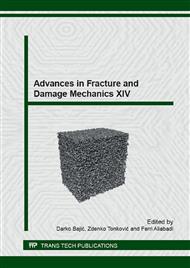p.33
p.37
p.41
p.45
p.49
p.53
p.57
p.61
p.65
Different Inclusion Contents in H13 Steel: Effects on VHCF Response of Gaussian Specimens
Abstract:
The effect of different inclusion contents on the VHCF strength of H13 tool steels is presented. Two different H13 tool steels were investigated: the Uddeholm Orvar® 2 Micronized obtained by conventional casting, and the Uddeholm Orvar® Supreme obtained by electroslag remelting (ESR). Ultrasonic tests were performed on Gaussian specimens (risk volume about 2300 mm3) up to 1010 cycles or up to failure and fracture surfaces were investigated with SEM in order to analyze the inclusions from which VHCF crack nucleated. Experimental results show that the VHCF strength estimated by using the Murakami’s model of the H13 Uddeholm Orvar® Supreme steel is about 15% larger than that of the H13 Uddeholm Orvar® 2 Micronized steel.
Info:
Periodical:
Pages:
49-52
Citation:
Online since:
September 2015
Authors:
Price:
Сopyright:
© 2016 Trans Tech Publications Ltd. All Rights Reserved
Share:
Citation:


